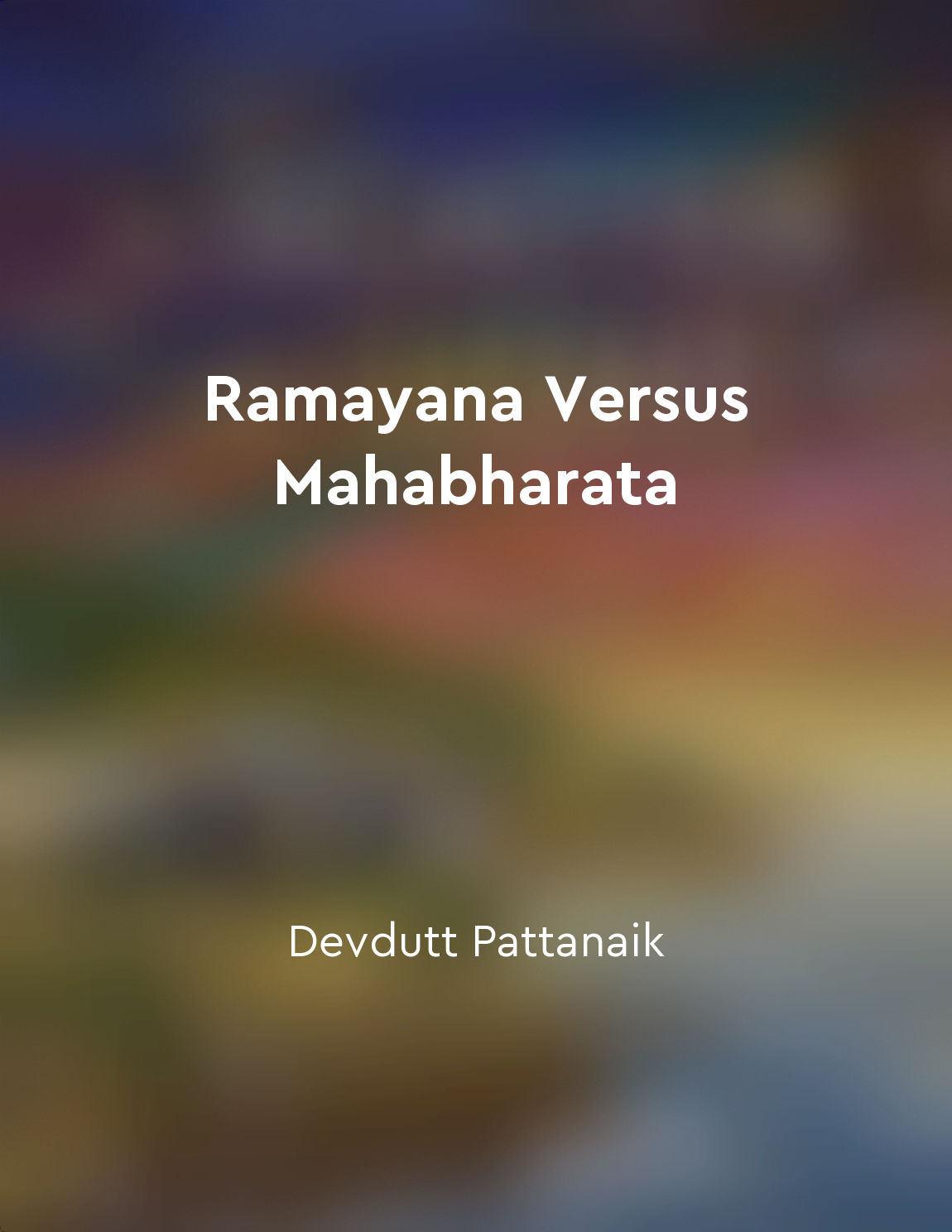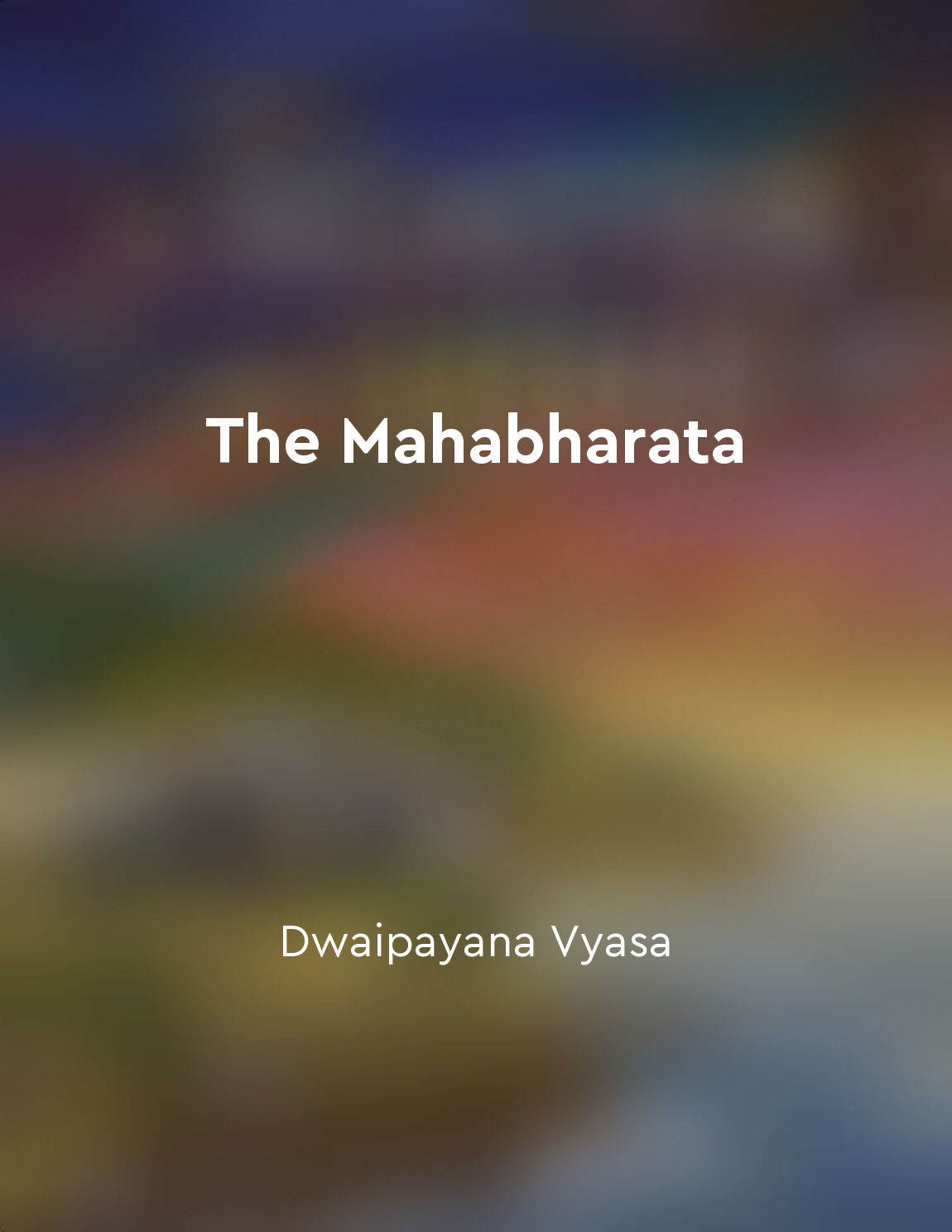Ramayana's Ayodhya is peaceful, Mahabharata's Kurukshetra is battlefield from "summary" of Ramayana Versus Mahabharata by Devdutt Pattanaik
In the Ramayana, Ayodhya is portrayed as a peaceful kingdom where righteousness and order prevail. The city is described as a utopia, a place where everyone lives in harmony and prosperity under the rule of the virtuous king, Dasharatha. The people of Ayodhya are content, and there is no conflict or discord within the kingdom. It is a place of tranquility and serenity, where the natural order of things is maintained, and dharma is upheld. On the other hand, the Mahabharata presents a stark contrast with its depiction of Kurukshetra as a battlefield, a place of chaos and destruction. The city is torn apart by the great war between the Pandavas and the Kauravas, where bloodshed and violence reign supreme. Kurukshetra is a battleground where power struggles, betrayal, and familial conflict have led to a catastrophic war that ultimately results in the loss of countless lives. The contrasting portrayals of Ayodhya and Kurukshetra reflect the different themes and messages of the Ramayana and the Mahabharata. The Ramayana emphasizes the importance of righteousness, duty, and moral values, which are embodied in the peaceful kingdom of Ayodhya. It teaches the reader about the consequences of following dharma and the rewards of leading a virtuous life. On the other hand, the Mahabharata delves into the complexities of human nature, the gray areas of morality, and the consequences of actions taken in the pursuit of power. The epic presents a more realistic and nuanced view of the world, where there are no clear-cut heroes or villains, and where even the most noble intentions can lead to tragic outcomes.- The contrasting settings of Ayodhya and Kurukshetra in the Ramayana and the Mahabharata serve to highlight the different philosophical and moral themes explored in these two great epics of Indian literature. They provide the reader with a deeper understanding of the complexities of human nature and the eternal struggle between good and evil.
Similar Posts

Hinduism has always embraced change
Hinduism, as a religion and way of life, has always been dynamic and adaptable to changing circumstances. From its earliest ori...
Sita's faith in Rama
Sita's unwavering faith in Rama is a central theme in Valmiki's Ramayana, illustrating the depth of her devotion and trust in h...

Ramayana's Panchavati is exile, Mahabharata's Dvapara Yuga is era of war
In the Ramayana, Panchavati is the forest where Rama, Sita, and Lakshmana live during their exile. It is a place of peace and t...

Honor and respect
In the great epic of Mahabharata, the concept of honor and respect is deeply woven into the fabric of the narrative. Throughout...

The consequences of pride
Pride, that great sin of sins, is the root cause of downfall. It blinds the eyes and clouds the judgment of even the wisest sou...
The game of dice leading to Pandavas' exile
In the great Indian epic Mahabharata, there is a pivotal event that changes the course of the story - the game of dice. This fa...

Ramayana's Ravana is demon king, Mahabharata's Dhritarashtra is blind king
In the Indian epic Ramayana, Ravana is portrayed as a powerful demon king who rules over the kingdom of Lanka. He is depicted a...
Enduring legacy
The Ramayan tells the story of Prince Rama, who is exiled from his kingdom and must rescue his wife Sita from the demon king Ra...

